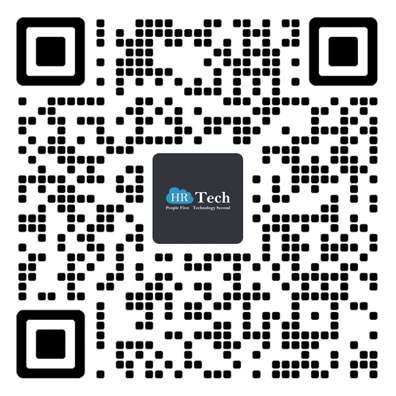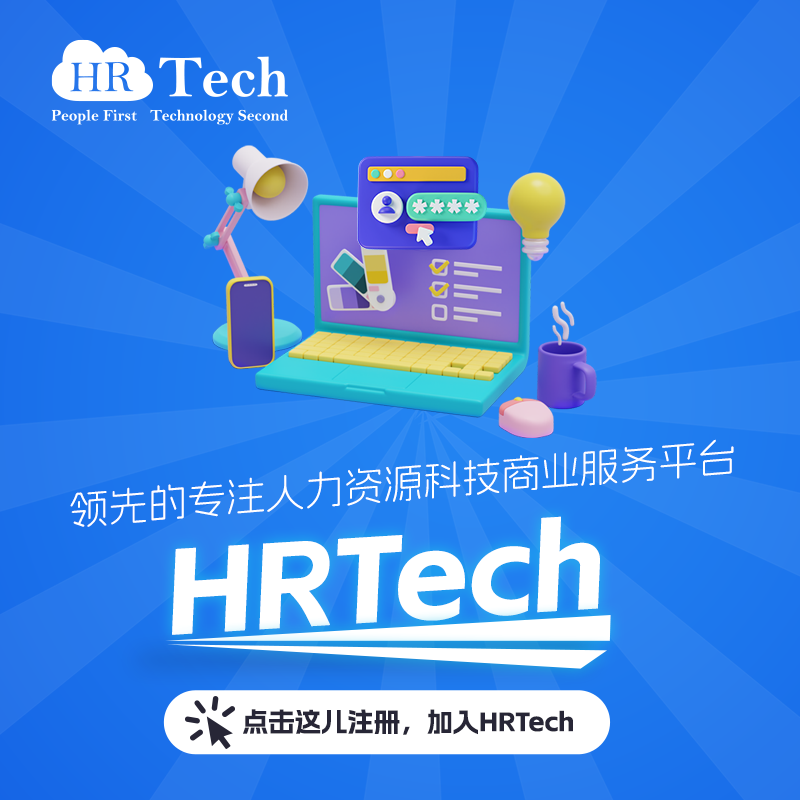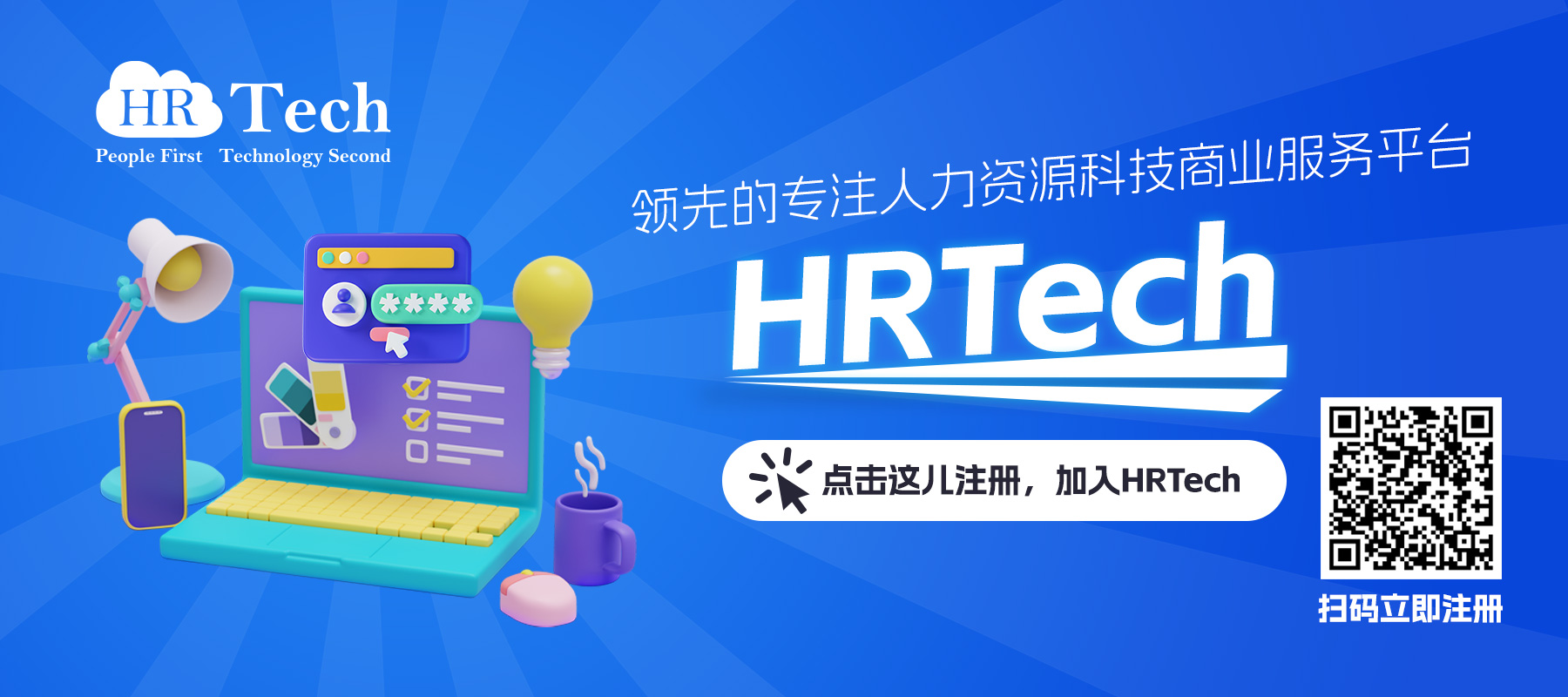观点
基于云端的人力资源系统面临的9项技术挑战
文/George Lawton
基于云的人力资源系统为人力资源部门带来了许多进步。他们提供的服务有助于简化人力资源任务,实现员工体验和保留员工,并降低成本。然而,基于云端的人力资源系统也带来了许多技术负担,软件采购团队中的每个人——尤其是IT部门——都应该考虑选择哪个工具并部署和提供给员工。
以下是其中九项挑战。
1.新的安全负担
与几乎所有用于管理员工生命周期的软件一样,基于云端的HR系统使用敏感的员工数据作为服务的一部分。许多人认为使用公共云服务会产生合规责任和安全漏洞。“处理基于SaaS的人力资源平台真的很有挑战性,”客户体验服务公司Glassbox全球人力资源副总裁Hila Bazar说。Glassbox发现,当数据存储在本地服务器上时,以与访问控制粒度相同的粒度控制雇员数据的安全级别和使用更加困难。此外,新的GDPR法规正在收紧合规要求,这增加了额外的负担来跟踪。
由于这些问题,研究和选择符合您所有法规要求并保护您的敏感数据的供应商是至关重要的。在进入实施阶段之前确保它们在网络安全方面是彻底的。然后,与你的CTO,DevOps和它紧密合作,确保系统的安全和维护。不要认为任何事情都是理所当然的,”Bazar警告道。
2.平衡安全性和易用性
安全问题的另一方面涉及HR的消费化。消费者级接口可能没有适当的安全级别,这意味着IT可能需要添加它。但是,这可能会破坏易用性,因为额外的安全层会增加随之而来的批准和工作流程的复杂性。Espresa的首席技术官Raghavan Menon是员工福利计划自动化平台,他建议寻找能够应对这一挑战的供应商。他说,将授权作为工作流程的一部分集成到UI中的应用程序可以提高安全性和用户体验。
3.大量供应商
HR通常与许多基于云的HR供应商打交道,以提供各种员工服务。每个人都可以带来自己的数据模型。IT部门与人力资源经理合作,还必须确保为每项服务授予对特定计划所需的适当数据的细粒度访问权限。相反,人力资源部门应与IT部门合作,确定使用员工角色的权限系统,以便更轻松地管理对基于云的人力资源服务和数据的访问。Menon说,需要明确支持平台中的供应商角色,并使用数据模型将它们与公司和员工角色联系起来。
4.急剧变化的使用模式
测量可能是一项重大挑战。基于云计算的人力资源系统必须支持的计算负载有很大的变化。例如,一个2000人的公司的平均系统负载可能是每小时100页。但梅农说,在月末的时候,峰值可能高达每分钟8000页。
一个好的策略是采用基于云的HR系统,可以动态扩展和缩小以满足这些不断变化的工作负载。IT和人力资源经理不仅需要考虑扩展服务,还需要考虑与服务相关的数据管理,身份验证和权限基础架构。
5.跟上集成
云可以轻松地按需添加各种HR服务。每项新服务还极大地推动了将其集成到特定工作流程所需的所有其他服务的需求。需要维护的单独HR系统的数量可以在10到100之间,并且在所有这些系统中一致地管理所有集成和权限可能非常困难,Betterworks Systems首席产品官Anup Yanamandra表示,比如员工敬业度和发展服务。
在可能的情况下,尝试将这些集成集中在一个通用平台中。这大大减少了添加新服务时所需的新集成数量。
6.自定义云服务
埃森哲人力资源部门总经理Chris Schaaf表示,“没有一种通用的云HR解决方案。” 埃森哲的IT组织正在部署能够专注于用户需求,体验和参与以及集成和无缝功能的功能,使用户能够在他们所使用的任何设备上随时随地完成最佳工作。
Schaaf说,公司寻求的任何类型的人力资源平台都不应该复杂到需要广泛的最终用户培训。时尚的视觉设计,移动功能和实时功能都可以提高采用率。
7.可扩展性和灵活性测试
IT和人力资源部门应与供应商合作,在自己的组织中测试人力资源云服务的可扩展性和灵活性,而不是以面值来衡量供应商的声明。有许多因素会影响可扩展性。此外,确保特定服务可以适应不同的人力资源流程非常重要。
“一个关键的最佳实践是向供应商概述您的组织如何运作,识别潜在的风险点,然后共同预防和修复,”Schaaf说。例如,埃森哲使用ServiceNow为其员工提供引导式休假服务。他说,ServiceNow提供了一个开放的客户端框架,可以通过标准模板和工作流轻松定制体验,从而提供灵活性。
8.新的技术支持负担
基于云的HR系统可以轻松添加新服务。但下一步是提供技术支持这使员工能够无缝地使用这些。为了使事情顺利进行,IT需要与人力资源团队合作,以确保在采用新的云服务时考虑内部支持,这通常被视为理所当然,成就者产品副总裁Egan Cheung表示,员工奖励服务。否则,人力资源部门就有可能成为其为员工提供的云服务的技术推动者。这可能会给IT部门带来重大技术挑战,而且必须要弄清楚问题是由云服务还是其他IT服务引起的。可以提供帮助的一件事是SaaS产品在部署期间和之后提供客户支持,其中包括与内部IT支持人员合作解决跨服务问题的过程。
人力资源专业人员非常忙碌,因此他们需要一个与其他程序无缝集成的平台,易于使用且几乎不需要维护。为此,IT支持很少的人力资源部门应该寻求一个基于云的系统,其中包括对程序实施的全面,端到端支持,以帮助进行数据管理。
9.为数据淹没做好准备
当公司开始实施基于云的人力资源工具时,他们通常会注意到他们能够访问的数据量大幅增加。这是一件好事,因为数据将被理想地用于告知公司的人力资源战略。但这可能是压倒性的,特别是如果人力资源专业人士没有分析倾向。“他们首先需要建立一个系统,以确保数据的结构化,信息化和可操作性,否则他们会感到淹没,数据将未得到充分利用,”Cheung说。
云可以更容易地以遵循特定云服务提升的自然路径的方式访问原始数据。但是,需要做更多的工作来获取,理解和分享这些数据,从而有利于人力资源经理的独特挑战。问题的很大一部分是有意义的数据科学通常依赖于编排来自多个云服务和内部数据源的数据。寻找一个可以用来计算ROI和对个体业务有意义的度量信息的工具。人力资源专业人员不应该独自进行紧缩。
以上为AI翻译,观点仅供参考。
原文链接:9 technical challenges of cloud-based HR systems
观点
基于云端的人力资源系统将会越来越好
文/Sarah Fister Gale
现如今,大量公司将其核心系统接入云端,人力资源部门也不例外。
云端的灵活性意味着技术团队可以快速无缝地提供新功能和交互。基于云的人力资源系统也意味着供应商可以更快地实现新的迭代,并且减少麻烦。
普华永道亚特兰大首席人力资源技术负责人Dan Staley表示,这对客户来说是个好消息。“供应商过去常常每隔一到两年推出一次升级,现在它们每季都推出一次。”这为用户提供便利,用户可以即刻访问最新功能,并允许供应商增加其功能。
这使他们能够加快路线图的时间表,并使大型供应商更容易获得同类最佳小公司,并将它们集成到其工具套件中。“我们希望看到供应商能够更快地加强产品能力”他预测道。这包括嵌入更多社交和协作功能以及添加新报告和仪表板。它还允许他们整合多个来源的数据,以支持劳动力分析——这是生成实际业务价值的地方。
人力资源管理系统供应商长期以来一直承诺进行预测分析,没有太大的进展。德勤咨询有限责任公司Bersin解决方案提供商研究副总裁Christa Manning说,这可能很快就会改变。“大多数平台正在试验机器学习,以从他们拥有的大量员工数据中获得有意义的见解。”
大数据的重要一年
虽然真正的劳动力管理预测分析仍然是一个梦想,但包括Workday,Visier,Vista,IBM Watson和SAP Successfactors在内的多家供应商现在都提供了一些数据分析功能。这些工具有望提供一系列见解,例如公司是否满足多元化目标,面临周转风险,以及培训职业发展建议。
大部分供应商正在利用存储在公共云中的庞大数据库来磨练系统。公共云拥有大量的劳动力数据,这对于创建有用的算法至关重要,而算法又是计算机用来分析数据的一组规则。“需要对大型数据集进行算法训练,以了解哪些信息是相关的,”Manning指出。“他们从每次交流中学习,并随着时间的推移变得更好。”
Staley预测,由于这些算法能够利用更多数据集,因此能够提供更有针对性的见解。例如,想象一个单一的系统可以查看员工的加班日志表,旅行支出和他们的LinkedIn行为,以确定哪些过度工作的员工最有可能退出——然后提供人力资源建议,告诉他们可以做些什么来让他们留下来。“使用预测分析有很多可能性,以确保你的最佳人才不会离开,”他说。
加利福尼亚州普莱森顿市Workday HCM产品副总裁Cristina Goldt表示,人力资源管理系统中的分析工具也将在管理工作人员方面发挥作用,它可以查看有关所有类型的工人和项目的数据,帮助公司更好地分析何时何地雇用承包商与全职员工,选择谁以及如何支付他们。“他们可以将技能与不同的角色相匹配,并使他们的招聘系统更有效率,”她说。
包括Workday在内的一些供应商也为客户提供了将他们的数据洞察与行业标准进行比较的能力,以了解他们的立场。“这使得他们可以与同行进行比较,”Goldt说。
我们准备好了吗?
所有这些场景都很诱人,尽管这些时候商业领袖仍然可以通过粗略地浏览分析仪表板来预测员工趋势,Goldt表示,与推出并准备使用的其他软件不同,机器学习需要时间和培训,并且需要使用相关数据访问链接数据库。“它被称为机器学习是有原因的。”
客户对于如何在自己的组织中应用分析仍然有些不确定。Manning说,部分原因在于缺乏有意义的案例研究。“每个供应商都在谈论人力资源的机器学习,但目前还没有很多例子。”
对于那些听过供应商吹捧劳动力分析强大“魔法”的pitches的公司,她敦促他们“要求实时客户参考”和现实世界的例子来证明其他公司正在做什么,他们是如何做到的以及他们看到了什么结果。“培训算法需要与了解技术的供应商建立强有力的合作伙伴关系,以及如何提供可操作的信息,”她说。这种转变需要时间,因此选择一个值得信赖的供应商非常重要。
以上为AI翻译,观点仅供参考。
原文链接:Sector Report: Cloud-Based HR Systems Make Everything Better
观点
为什么在今天的招聘过程中,人工智能(AI)并不能完全取代人类智能(HI)?
文/Lou Adler
译/杨喆
人工智能正在快速提高甄别最佳在库候选人的能力。但是,人工智能在识别那些没看到招聘信息,或是暂时不考虑看机会的潜在求职者时,效果就没那么好了。当招聘这些潜在求职者时,便需要比在库甄别更复杂的流程。
招聘经理想要找到一个能在接受薪水范围来做这份工作的人,潜在求职者则对各种机会进行评估,然后选择最有竞争力的offer。如何在招聘经理和潜在求职者间达成一致,这方面人类智能(Human Intelligence)比人工智能(AI)更胜一筹。
人类智能在招聘中的优势:
先来了解一下HI是如何有效促进招聘的:首先,HR找寻到那些目前不看机会的候选人,经由招聘经理同意后,与其进行沟通。如果候选人对职位有兴趣的话,HR尊重候选人意愿并进行深入的面试,面试的严谨性也在一定程度上能够代表对职位的重视。接下来,HR再与招聘经理协商,在确定薪酬范围(有可能会超出之前预定的薪酬)的基础上发放offer。
与招聘经理达成一致是首要准则,其次,也有一些‘常识性( commonsense)’原则:
为了吸引和聘用最优人选,HR会考虑更多,而非机械的按照硬性指标如经验、技能等筛选。比如可以依照工作内容设置4-5个挑战,看看候选人是否能够做到,从而确定其能力是否匹配职位。
要知道优秀的人才总不乏机会,所以HR要掌握优秀的谈判沟通技巧来吸引候选人。比如要在彼此沟通中更多的了解和明确信息,而不仅仅是推荐自己的职位。
需要确保招聘经理知道如何进行双向面试,以评估能力和匹配度,同时也要展示职位的潜力与吸引力。
将陌生人变为熟识虽然需要投入大量时间,但却十分必要,在候选人评估机会时,人脉与职业发展同样重要。
如果你想让招聘经理相信上述原则有效时,可以例举一些过去所聘用,且在内部得到高度推荐或晋升的人,你会发现他们几乎都是用上述提到的原则招聘进来的。事实上,大多数公司在招聘关键职位的候选人时都使用类似的方法。
AI与HI在招聘中最大区别在于职位期望在早期就已经明确时,HI更注重候选人的潜力和过去做类似工作的经验,除此之外,也重视在招聘需求产生前就建立相关的候选人渠道,等需要相关职位候选人时,招聘起来会更加快捷。
上述的策略都需要人的参与,目前人工智能是无法处理这种复杂决策过程的。也许将来有一天人工智能够胜任,但就目前来说,在招聘关键职位的人选时,HI的效能才是至关重要的。
原文链接:Why AI Is No Match for HI (Human Intelligence) in Today’s Hiring Process
观点
人工智能影响未来招聘的5种方式
文/Michael Klazema
人工智能正在改变每个行业,人力资源也不例外。人工智能技术正在迅速重塑人力资源专业人士和招聘经理筛选候选人,管理申请人体验和处理入职流程的方式。在10年内,招聘可能看起来与今天完全不同。
以下是AI影响这一巨变的五种方式
招聘过程效率提高
您如何确保合适的候选人看到您公司的职位发布?人工智能有答案。
一种选择是预测分析。TapRecruit可以仔细阅读你的职位发布(以及竞争对手的职位发布),并根据语言模式和结构进行分析。该调查结果将通过确定表现不佳的职位与成功职位的区别来帮助公司编写更强有力的职位描述。它甚至会标记任何可能有偏见的语言,促进更多样化的候选池。
另一种选择是数据管理处理(DMP),它使用cookie来跟踪访问您职业页面的人。使用这些数据,您可以了解更多关于您的候选人口统计数据,并使用像谷歌广告这样的平台来瞄准他们——换句话说;人力资源部门将从市场营销中借鉴经验。
招聘经理无需整理简历
实现人工智能的人力资源部门的首要任务是将琐碎的工作自动化。许多企业已经在使用求职者跟踪系统扫描简历,识别关键字或短语,并根据求职者的“理想”简历匹配程度对简历打分。
视频面试将更加重要
在过去十年中,我们看到在招聘流程中使用视频访谈的公司数量大幅增加。随着越来越多的公司为此目的采用面部和语音识别技术,视频采访将成为叙述中更为重要的部分。
通过监测语音模式、面部表情和肢体语言,这项技术将能够测量性格特征、压力水平、自信等等。这将有助于铲除不诚实的候选人,找到那些性格最适合公司文化的人。
引导求职者通过招聘流程
找到合适的职位候选人很困难。不幸的是,招聘经理和人力资源经理经常忘记的是,候选人求职也很困难。寻找新工作并不是一个有趣的想法——特别是当这个过程涉及与不喜欢交流的雇主打交道时。候选人的经历很重要,特别是在求职者的市场上。企业需要让申请人的生活变得轻松,因为如果他们不这样做,他们就有可能失去强大的人才,或在潜在的申请人中树立坏名声。
据NBC新闻报道,今天的求职者希望现代招聘流程“ 更像是一个送餐的应用程序。”这个要求看起来很傻,直到你深入挖掘:求职者想要什么——提醒,短信,直观的在线应用系统,关于他们是否得到这份工作的通知,对候选人的经历都是合理的期望。雇主可以使用AI来满足这些要求,无论是通过启用网站聊天机会来回答候选问题,还是通过自动礼貌地向未被选中进入面试过程后期阶段的候选人发送电子邮件。
帮助雇主更多地了解他们的候选人
我们已经提到使用跟踪cookie来识别求职者的人口统计数据,但是如果您也可以将这些数据合并到候选人的专业人员档案中呢?了解申请人在线搜索的内容可以帮助企业识别在简历,工作申请或面试中可能不一定出现的技能或兴趣。
许多人申请工作并继续从事工作——这些工作不一定与他们想做的事情相符。通过向雇主提供有关潜在雇员的更多详细信息,AI可以使企业调整工作以适应有才能的人或推荐可能符合个人最大利益的职位。
这里有一个关于隐私的问题,如果这项技术变得突出,人力资源行业将需要努力解决这些问题。然而,还有一种观点认为,雇主通常需要数月或数年来释放员工的全部潜力,因为他们不知道是什么让他们这么做。人工智能技术的使用可以使企业从一开始就从他们的雇员中获得更多,并且可以通过一种方式来改善求职者和员工的工作适应性和生活质量。
结论
其中一些趋势已经在招聘和招聘中体现出来,还有一些离我们较远。只有时间才能说明这些想法中的哪一个能够占据并塑造人力资源的未来。无论下一步是什么,毫无疑问AI都会发挥作用。首先利用这些技术的人力资源专业人员和招聘经理将获得最高的红利。
注:以上内容由AI翻译,观点仅供参考。
原文链接:5 Ways AI Could Influence the Future of Recruitment
观点
李开复:未来“有惊无险”的10种工作,其中包括人力资源
人工智能并不是一场普通的技术变革,在人类历史上,可与其比肩的只有蒸汽机和电力的推广使用。由于人工智能算法会渗透到每个行业、每个工作,它甚至会改变人类做事的许多方法,对于个人、企业和社会带来的变革,比之前的互联网革命来得更剧烈、影响力更大。人工智能对个人和社会带来的改变,将超过之前发生的所有工业革命和技术革命。
人工智能带动了科技发展,提升了生产力,这些好处固然引人关注,但是比起全球各地将产生的严重失业问题,以及分配不均的加剧(国内与国家之间),就不足为道了。随着深度学习应用的普及,人工智能势必会冲击全球经济,整个经济体系上上下下数十亿的就业机会如会计师、流水线作业员、仓储作业员、股市分析师、质检员、货车司机、律师助理、放射科医生等,都会受到冲击,并且上述工作只是其中的一部分。
人类文明过去曾经成功地消弭了科技对经济造成的冲击,例如在19世纪和20世纪,有数亿的农民成功地转为了工厂员工。但是,先前的那些重大科技变迁,从诞生到发展的速度没有人工智能这么快。照目前科技发展和应用的趋势来看,我预估在未来15年内,人工智能将会减少美国40%到50%的就业机会,但实际的就业损失还会延迟若干年,因为必须考虑到很多现实因素,例如雇主相信人工智能的程度、法规限制等。但我预测,人工智能对就业市场的冲击将会非常大,而且冲击很快就会到来。
有朋友跟我探讨:我经过多年学习培训才获取足够的技能从事的工作,未来应该会比“蓝领工人”安全吧?
实际情况并非如此。分析人工智能取代工作岗位,不能仅仅用传统“低技能”对比“高技能”的单一维度来分析。人工智能既会产生赢家,也会产生输家,这取决于具体工作内容。尽管人工智能可以在基于数据优化的少数工作中远胜人类, 但它无法自然地与人类互动,肢体动作不像人类那么灵巧,也做不到创意地跨领域思考或其他一些需要复杂策略的工作(因为这些工作投入的要素和结果无法轻易量化)。一些人类看上去很难的工作,在人工智能看来可能是非常简单的;一些在人类看上去很简单的工作,可能确实人工智能的死穴。我们可以用以下两张图来说明:
对于体力劳动来说,X轴左边是“低技能、结构化”,右边是“高技能、非结构化”。Y轴下边是“弱社交”,上边是“强社交”。脑力劳动图的Y轴与体力劳动一样(弱社交到强社交),但X轴不同:左侧是“优化型”,右侧是“创意或决策型”。如果脑力劳动的重点是将数据中可量化的变量最大化(例如设置最优保险费率或最大化退税),就归类为“优化型”的职业。
这几条轴将两张图各分为四个象限:第三象限是“危险区”,第一象限是“安全区”,第二象限是“结合区”,第四象限是“慢变区”。工作内容主要落在“危险区”的工作(如卡车司机等)在未来几年面临着被取代的高风险。“安全区”的工作(如心理治疗师、理疗师等)在可预见的未来中不太可能被自动化。“结合区”和“慢变区”象限的界限并不太明确:尽管目前不会完全被取代,但工作任务的重组或技术的稳定进步,可能引起针对这些工作岗位的大范围裁员。
在左上角的“结合区”中,大部分计算和体力性质的工作已经可以由机器完成,但关键的社交互动部分使它们难以完全自动化。所以,最可能产生的结果就是幕后优化工作由机器完成,但仍需要人类员工来做客户的社交接口,人类和机器形成共生关系。此类工作可能包括服务员、理财顾问甚至全科医生。这些工作消失的速度和比例取决于公司改造员工工作内容的灵活程度,以及客户对于与计算机互动心态的开放程度。
落在“慢变区”的工作(如水暖工、建筑工人、美术设计师等)不依赖于人类的社交技能,而依赖灵活和巧妙的手工、创造性或适应非结构化环境的能力。这些仍是人工智能的短板。由于不断发展的技术会在未来几年中慢慢提升这些短板,所以此象限中工作消失的速度,更多地取决于人工智能能力的实际扩展。
在我看来,警告、悲观、恐慌是“不识庐山真面目”的杞人忧天。以下是我整理的看似很危险,其实很难被AI取代的10种工作。
人力资源
人力资源、特别是员工招聘和猎头工作,都要涉及大量的人际互动。说服某人放弃现有工作、考虑其他工作是相当不容易的,这需要建立在对对方的长期深入了解和互相信任的基础上。当然,随着人力资源工作变得更倾向于以人为中心,人力资源行业也会利用AI完成常规的问答工作(比如回复雇员的邮件)、监督雇员工作表现、发起招聘启事、筛选求职者并进行工作匹配等。
健身教练
尽管未来总会有更高质量、更智能的健身器材帮助我们锻炼,但健身教练无可取代的地方在于,他们能为我们每个人量身打造健身计划,在旁陪练指导,还能敦促我们坚持锻炼,避免犯拖延症。其次,随着社会财富增多,出行方式变得更高效(如智能型、甚至是自动型电动平衡车),我们对于锻炼的需求将大大超出以往。最后,AI时代会给我们带来更多的社会财富和闲暇时间,自助、娱乐和健康将成为发展的主题。
养老护理员
到2030年,麦肯锡医疗保健类工作岗位将在全球范围内猛增5100万个,总数将高达8100万个。这类工作包括养老护理员、家庭健康护理员、私人护理员以及护士助理,不过最大的岗位空缺将出现在与养老护理相关的领域。考虑到人类寿命延长、老年人对医疗保健的大量需求以及填补此类工作空缺的难度,这一需求还会不断攀升。AI固然可以实现老年人的医疗监护、安全保障和移动辅助等基本功能,但像是洗澡、穿衣以及更为重要的聊天和陪伴工作,都是AI是无法胜任的,只能交由人类完成。
房屋清洁工
像房屋清洁、园艺以及其他需要在非固定结构空间内进行、且所在环境较为多变的工作,对于机器人而言难度太大。虽然像伦巴扫地机器人(Roomba)这样的智能设备会承担部分工作量,但整体而言,这类工作的就业水平有望得以维持。此外,我们预测,各类移民服务岗位将大量增加(在法律允许的前提下),因为AI将进一步拉大贫富国家之间的差距。
护士
护士、保育员、心理健康辅导员以及戒毒治疗师是最难被机器替代的工作类型之一,这类工作涉及大量的人际互动、沟通和信任的培养。例如,治疗情绪不稳定、有抑郁症状的病人需要娴熟的沟通技巧,治疗师需要先了解造成病人情绪困扰的根源。这些都远远超出了AI技术目前的能力范围。
楼房管理员
楼房管理、酒店管理、定制服务等其他高端服务将是财富新贵群体的高需求所在(如AI企业家和工程师)。在互联网(旅游网站)和AI(自动化快餐和咖啡)提供标准化服务的同时,那些具有人情味、个性化以及能够构建长期关系和信任感的优质服务将具有更高的价值。在AI时代,休闲和娱乐产业将成为强劲的增长领域。
运动员
虽然未来机器将比人类更擅长比赛,但体育运动不会因此而受到丝毫的影响。这些都是需要人类参与的娱乐活动。运动明星与知名歌手、演员并无二致。随着人们闲暇时间的增加,拥有非凡天赋和个人魅力的运动员将有更强的吸金能力。
保姆
保姆是最讨喜的工作之一,甚至可能会被当成家庭成员来看待。保姆的许多体力工作会实现自动化(比如除尘和洗碗),如此一来,他们的工作会逐渐转向“关爱和个性化”服务,比如悉心烹饪一顿孩子爱吃的饭菜,或是朗读孩子最爱听的故事。保姆将花更多的时间去陪伴、照料家里的孩子,和他们玩耍。能够成功转型的保姆是AI无法替代的。
导游
优秀的导游是擅长讲故事的人。他们将个人经验和百科知识巧妙地融合在一起,并以戏剧化的方式呈现给游客,从而打造出独一无二的旅行体验。优秀的导游还能挑起趣味横生、内容丰富的谈话,创造出一段令人怀念的旅程。当然,那些照本宣科、一味重复的导游,在AI取代人类工作的大潮中就没那么走运了。
数据处理和标签
最后来个大惊喜。虽然每个人都认为数据录入和处理会因机械化而被淘汰(甚至不需用到AI)。但在未来二十年内,AI进行的训练会用到规模庞大且不断增长的数据。这些数据需要经过初期的人工筛选、处理、贴标签和分类。亚马逊土耳其机器人(Amazon Mechanical Turk)就是个很好的例子。不过,可别期待能从这类工作中获得高薪。
原文来源:李开复:未来“有惊无险”的10种工作
观点
HR必读:2020年人力资源六大发展趋势
文/Mariya Tsarova
译/杨喆
如今有许多公司都在使用技术来管理福利、薪资和招聘,人工智能和机器学习已经取代了客服、旅游和行政相关职位,人力资源是否也会面临被取代的窘境?
自动化一直被运用于改善业务流程,从而使高管能有更多时间来关注战略和营销。如今人力资源部门也成为其改善的一部分,在未来三年中,情况将会大不相同。
2020年人力资源发展趋势:
1. 人力资源运营以外包为主
虽然人力资源部门不会消失,但必然会有所缩减。
多数企业已将许多日常业务(如工资、福利等)外包给咨询公司,这些咨询公司一般都能提供一站式服务,从招聘到职业培训再到离职面试无所不包。
到2020年,大型人力资源部门不再存在,将会出现集中式的团队(centralized-team),他们不仅与高管人员在战略上进行合作,也管理与外包机构的合作。
2. 远程办公成为常态
越来越多的公司提供更为灵活的工作安排,并将其作为福利计划的一部分,以吸引最优秀的人才。实际上,千禧一代的员工,现在就已经将灵活办公视为确定工作的关键因素之一。
除了服务业、体力劳动和医疗保健岗位外,已经有更多的人倾向于从事兼职或全职的远程工作。员工甚至愿意接受更低的薪水,来换取远程办公的便利。而且远程办公也为公司节省了数千美元的昂贵办公空间,并提升了因交通堵塞、病假等原因降低的生产率。
2020年的人力资源部门将适应招聘、管理远程员工,也会因此获得来自世界各地最优秀的候选人。
3. 招聘将成为一项全球性的竞技运动
由于能够远程办公,招聘人员会考虑来自全球各地的应聘者,人才库的扩大也意味着人才竞争的加剧。
未来的人力资源团队在招募优秀人才时必须更具有战略性,HR不仅要与竞争对手争夺最优秀的人才,还要与那些之前未听说过的世界各地的公司竞争。
到2020年,人力资源部门将拥有更匹配的基础设施,辅助他们招募到最优秀的人才,也让来自世界各地的员工团结一致的工作。
4. 朝九晚五已经成为过去
公司将不再以每周工作40小时的标准来衡量员工,而是以项目为基础,以产出的成果作为绩效衡量的标准。对生产和工时测量的转变会产生一定的‘副作用’,比如公司将提供无限的假期和病假时间,当工作时间不再作为标准,员工可以根据项目和截止日期自由安排自己的工作时间,这会在一定程度上提高生产力。
5.人力资源成为培训(和再培训)的中心
随着科技的飞速发展,员工很容易在技能上落后。
到2020年,雇佣新员工依旧比留住现有员工成本更高。一旦公司找到了合适的人选,就会想尽一切办法留住员工,培训就是吸引其留下的关键因素之一。
人力资源的主要职责之一,就是与其他部门合作掌握最新的技术,促进员工和自身不断学习,这对公司和员工都是双赢的。
6.对小众人力资源专家的需求将会增加
即使自动化和外包会影响到人力资源,它仍然被称为‘人力’资源。当员工的薪水有问题,或者需要调解人来解决冲突,或者仅仅只是想倾诉时,他们更想有个人能面对面的进行交流。
随着广义人力资源职位的取消,对具有专业知识、熟知专业领域的高素质HR的需求将会增加,在医疗和政府等受到高度监管的行业中,尤其如此。
结论
制定“未来式”人力资源计划的关键就是关注当前的趋势,2020年离我们并不遥远,许多这样的预测已经在世界各地的人力资源部门中付诸实施。
科技日新月异,但每一项技术进步都是为了造福人类而设计的,不管一家公司多么“精通技术”,它的成功仍然取决于它所雇佣的员工。
来源:The HR department of the future
观点
人力资源技术企业发展迅速-收购势不可挡
文/Julia Qiu
译/杨喆
人力资源科技是一个庞大的领域,它几乎涉及到全球范围内从招聘到绩效评估的各个层面,据相关信息估算,该市场的价值约高达4000亿美元。在过去两年里,风投和私人股本投资者在这个市场中投入了近20亿美元,仅2017年前七个月里就投入了9亿美元。
大量新进企业涌现带来的冲击,使得现有企业不得不想尽办法,在竞争日益激烈的市场中捍卫自己的地位,这也进一步促使人力资源技术整合的新纪元开启。
截至目前为止,今年已经出现了许多大规模的人力资源技术收购:日本人力资源巨头Recruit Holdings宣布以12亿美元收购了美国雇主点评网站Glassdoor,促成了最大的一笔收购;年初时,ADP收购了Workmarket(该公司为雅虎和纽约时报等提供自由职业者管理系统);Adecco以逾4亿美元收购了General Assembly。6月初,Workday宣布收购旧金山公司Rallyteam。
这些巨头终于意识到,充满活力的初创企业正在不断创新,他们正秉持着“要么吞并,要么被吞并”的心态,活跃在人力资源科技的生态系统里。
但这种典型的“新旧碰撞,而后吞并以维持新平衡”的情况,并非是涌现出如此多收购的唯一原因。
实际上,人力资源创新是宏观形式所趋,它不断的改变社会对于工作的定义。你可以把人力资源技术看作是一个“堆栈”,一些通用的范畴则解释了员工所经历的每一环节。
一般来说,它包含(1)招聘 (2)入职 (3)学习与发展 (4)工资与福利 (5)绩效管理与反馈 (6)人力资源信息系统(HRIS)。当然,每个目录中还有其下更多的子目录 ;时至今日,“堆栈”中的特定垂直领域已经相当商业化了,所以最好的机会在这些领域之外。
招聘是值得一提的领域,在过去几年中,自由职业成为一个新趋势,流动办公也更普遍。得益于快速的全球化,和更为高效便捷的通讯,人们不必再朝九晚五,或者待在办公室才能工作。
能与自由职业者合作,或通过远程、移动办公吸引并留住人才的技术,都极大地引起了我的兴趣。一些较为较著名的创业公司,比如Toptal、Hackerone和Slack也都致力于此(它们各有所长,业务也不尽相同)。这是一个有诸多细微差别的人力资源区域,但重要的是在其中区分各种因素,例如垂直特定平台与一般平台、封闭市场与开放市场、企业与中小企业客户、熟练与非熟练工人、长期项目与短期工作。
在欧洲也有公司在做类似的事情,比如法国的Side和Comet,以及德国的Gronda。这三个都是自由职业者平台,但却在招聘类型和场景上各有不同。Side是一个随需应变的平台,它主要通过学生的力量来完成一些简单的任务,而Comet试图通过一个包罗万象的自由职业者“OS”(即社区、活动和一套支持工具和服务)来吸引更多的技术人才。Gronda则在社交媒体渠道迎合了服务业的需求,推广了人才的同时也建立了行业信誉。
招聘吸引人的另一部分,在于如何更好地利用数据来吸引人才。公司怎样才能不仅仅是吸引人们投递简历,而是能进一步了解候选人,且让他们在面试过程中的每一个环节都参与进来呢?柏林Heyjobs等初创企业将目标市场程序化,以便更好地了解求职者,而 Entelo则利用人工智能,在全球范围内寻找被动求职者(即那些没有积极寻找新职位的人)。
一旦候选者申请职位,相关技术就会促使之后的每一个步骤都更有意义。瑞典的Teamtailor和英国的Beamery是我最喜欢的两家公司。前者将传统的求职者跟踪系统(ATS)技术提升到了一个新的高度,以帮助雇主创建品牌网站,提供顶级的求职者体验。后者正在构建一个求职者CRM平台,以优化求职者的重新聘用流程和职位宣传。
另一个瞩目的领域是文化与参与度,回顾以前可以发现,由于其未有明确的定义及衡量标准,许多公司便忽略了这一因素。然而,随着千禧一代的劳动力越来越多,而且(如前所述)员工有更多的机会从事自由职业或跳槽,企业再也无法将员工情绪当做儿戏了。毕竟,对于大多数职位而言,找到和培训一名新员工的成本,是远超过维持现有员工的积极性和敬业度所需的成本。Cultureamp和Glint等公司在这方面处于领先地位,它们为各级员工提供实时反馈工具,并为管理者提供可操作的见解和分析。在欧洲,类似的解决方案也在出现,包括丹麦的Peakon和法国的 Jubiwee,虽然每个公司应对员工敬业度的方式有所不同,但一致的的是,它们都将员工视为利润最大化者、而非成本项目。
2018年已经过去了大半,有一件事不言而喻:技术驱动的趋势会继续改变未来的工作,这种改变伴随着收购——不可避免的行业整合,当然还有新旧重组。这一切将会带来许多机会,人力资源技术初创公司也参与其中,他们不断的影响变革,也使得行业巨头为之瞩目。
Julia Qiu is Associate Partner of Mosaic Ventures, a London-based Series A-focused fund.
原文链接:HR tech is evolving quickly — more acquisitions are on the way
观点
工作的技术转型——德勒(Deloitte)人力资源服务负责人Michael Gretczko访谈
迈克尔,在过去几年中,您认为企业职场和劳动力在哪些方面发生了重大的改变?
事情正在发生变化,变化的步伐每天都在加快。巨大的外部压力迫使企业改变他们的经营方式。个人作为消费者和员工也具有更大的影响力,组织越来越多地从企业转向我们所谓的社会企业。 社会企业的崛起意味着,对于组织来说,需要更加迫切地去了解更广泛的社会、职场以及迅速变化的员工、零工工人以及其他商业伙伴。
从企业到社会企业的这种转变的关键在于组织问题不再被单一功能理解或解决,它需要每个CXO(交响乐团的首席执行官)强有力的协作和行动——明确有力的方向使得大家团结一致,优化组织绩效。
同时,技术还在不断改变着工作方式,不仅在认知和社会技术方面,而且组织和工作需要以不同的结构来释放这些新进展的潜力。未来的组织必须“永远跟随”,不断适应最新的机遇。
今天商业领袖面临的最大人力资本挑战是什么?
在这个混乱的世界中,商业领袖必须始终专注于在面对新的竞争对手,颠覆性技术以及日益互联和无国界的世界时保持竞争力。当组织在一个日益严峻的环境里挑战时,一个不变的因素是组织的员工对于提升竞争优势的重要性。劳动力是一切组织的支柱,因此他们的参与和忠诚是成功的底线。通过关注影响员工的挑战,企业领导者可以促进持续的绩效。我们相信,每个组织都需要关注5个截然不同且普遍存在的人力资本问题,以帮助人力资源和企业从人力中获取最大价值,去征服未来的世界。这5个关键问题是:转向工作的未来,创造简单不可抗拒的经验,优化人力资本资产负债表,激活数字组织,以及维持组织绩效。
然而,仅仅关注这五个问题是不够的。企业今天面临的混乱局面意味着在孤岛中工作将不再有效(如果有效的话),更紧密的协作至关重要。
HR和商业/职能部门领导者如何更有建设性地合作来应对这些挑战,并将人力资本转化为持续的竞争优势?
HR和商业领导者始终需要团结一致,以释放员工的价值。在今天的环境中发生的变化是人力资本的破坏。我们的劳动力和职场正在发生变化,市场上的许多创新从根本上改变了工作的完成方式。HR和企业领导者需要重新构想利用这些中断的工作。HR领导者有责任帮助企业领导者了解和理解外部市场趋势和力量,了解当前的劳动力的构成以及正确的未来构成,然后建立伙伴关系,开发最佳、最合适的品牌来吸引和留住未来可用的员工。所有这些都需要人力资源部门和业务部门协同工作,因此人力资本是未来业务战略的一个组成部分。
企业中怎样保持员工敬业度?为了让“下一代”员工有意义地投入工作,企业/职能部门领导者和人力资源领导者需要培养什么样技能和思维方式?
今天的职场趋势表明,人们在团队中工作得更多,而文化是一个复杂的主题,它是你的队友,经理,办公室和工作场所的许多其它组成部分共同作用的结果。尽管如此,文化仍然从根本上处于领导层。高管应该保持同步,以提供一致的、受支持和有价值的员工敬业文化。员工敬业度不是一个抽查测验,而是组织的一种习惯和独特体验,它需要一个整体的方法才能成功。一个交响乐团首席执行官似的人物比那些隔离的部门更能了解员工的需求和期望。
入职培训突然成为热议话题。它可以提高保留率并改善绩效结果。谁拥有入职培训 - HR或业务/职能部门负责人?您认为今天的企业级雇主在入职策略上有什么典型的失误?
入职培训是企业的一个流程。我们认为HR有责任去推动它,但在此过程中,企业应该充分的责任参与。在推动与同事和领导者的沟通方面,负责人发挥着重要作用,围绕重点和问责制明确优先事项,并确保新员工获得正确支持所需的支持。入职也应从offer被接受的那一刻开始,并持续一年。
在当今竞争激烈的世界中,人才招聘,尤其是经验丰富的招聘人才,对于组织的成功至关重要。但这个过程可能很慢,需要人工操作,而且很耗时,而且往往是在新员工的第一天工作开始。在今天不断沟通的数字世界中,新员工需要从招聘信签署之日起就感觉自己是公司的一部分。这意味着拓展,信息,接触点等,员工应该在正式工作前轻松完成福利登记、笔记本电脑选择和培训等入职工作,并能在舒适的家庭中开始工作,以便他们从在工作的第一天起就可以立即开始增值。行政流程的质量通常可以强烈地向潜在员工表明组织的数字化程度和办事效率,从一开始就做到这一点就会定下正确的基调。这个过程应该简单的,自动化的和热情的,这样新员工可以立即获得组织的积极体验。
根据BambooHR的一项研究,31%的新员工在前六个月内离职。在那些离开的人中,15%的人将其归因于缺乏有效的入职流程。不要因陷入这样的麻烦而失去顶尖人才。数字化入职流程是期望,而不是例外。
新员工入职与现有员工换岗的实际方法有何不同?此外,高级水平与初级水平区别在哪?
我们认为,无论内部或外部流动性如何,无论资历如何,入职培训都应具有相同的属性。入职是一个关键的业务流程,对新员工到退休员工的基本原则是一样的——打造世界级的、极具吸引力的体验。通过简化新职位的入职,员工在第一天就能担任新职位开始工作,最终能提高生产力,同时节省公司时间。我们还认为,从高管和内部入职的典型案例中吸取了一些教训可以帮助改善“新加入者”入职程序,像组织关系构建程序(例如,“与执行团队见面”)和来自管理人员的热情接待,这些活动对新加入者的积极体验具有高度影响力。
HR Tech是当今人力资源领导者的巨大投资领域。对于那些想要投资HR Tech stacks 以帮助团队的人力资源领导者,您有哪些重要的实用技巧?
人力资源技术市场正在经历技术市场中一些最大的混乱。 我们认为领先的人力资源平台的有以下几个特点:
令人信服且直观的用户体验:员工将消费技术体验带入今天的工作场所,并期望他们所使用的人力资源技术具有现代性和直观性,能够适应日益多样化的劳动力的需求。
可操作的见解:许多组织一直在努力有效地利用人员分析,因为他们的人力资源技术平台没有提供可用于推动业务流程优化的信息。
强大的生态系统:人力资源技术平台正在快速发展,并利用了机器学习、聊天机器人和自然语言处理等新兴技术。最可持续的人力资源技术平台已经开发出一种生态系统方法,它不会限制组织从单一解决方案中进行创新。
任何选择技术的过程都应该考虑这些结果,以确保技术能够实现并加速组织内部能力的转变。
虽然技术确实可以促进人力资源职能的规模和转型,但当涉及有效参与企业范围内的业务转型时,人力资源主管应该优先考虑什么?
主要的技术转型计划经常会失败或成功,这取决于组织中的人员是否改变其行为,采用新的工作方式。 对一个组织的任何改变都会对该组织内的人员产生影响,领导者应该努力确保他们的员工感到舒适,知情,受过培训并期待改变。通过优先考虑人员,转型更有可能取得成功,因为变革不会在真空中发生。我们认为,启用员工应该成为任何技术变革的关键焦点,并且应该成为转型开始的重点,在此期间,最重要的是在“上线”之后,当没有获得人员的持续关注,改革就会失败。
随着我们进入下一个十年,哪些新技术对员工体验(EX)的影响最大?您将跟踪该领域的哪些趋势和发展?
员工经验是劳动力技术市场中一些最激动人心的变化的巨大驱动力。企业越来越认识到员工参与的重要性,创建世界一流的员工体验是其核心。我们认为最重要的技术是:
数字化工作场所:新技术正在改变员工之间的互动方式,团队如何沟通和管理他们的工作,以及领导者如何与团队成员进行沟通和互动,支持这些流程的技术正在从消费者技术的根源迅速发展而来,并迅速改变员工在工作中一整天的互动方式。
认知(cognitive)和人工智能:这些技术通过自动化任务和使用数据优化流程来不断改变工作方式。机器开始能够比人类更快地学习并且基于模式不断开发各种能力。这些技术正在改变所需的技能设置,我们相信认真整合认知和人工智能为员工提供“机器人辅助”,实际上将改善员工的工作,将他们的工作重点放在工作中需要独特的人力完成的部分,并取消常规的行政工作。
感知和见解:从数据中开发知识一直是职场技术发展的关注焦点,但这刚刚开始围绕员工体验展开。组织正在使用他们掌握的员工的数据,以及他们如何与他们的领导、企业技术进行互动,来创造个性化的经验,反映员工工作。这也是对消费技术的应用——改造平日感觉像“一对多”的标准化体验,并使其成为以人为本,量身定制的体验。
HRT:感谢您对如何最有效地利用技术促进人力资源增长的深入洞察,迈克尔。我们希望很快再次与您交谈!
原文链接:The Technological Transformation of Work: HR Tech Interview with Michael Gretczko of Deloitte
注:以上内容由AI翻译,观点仅供参考。
观点
多元化和包容性是商业战略,而非人力资源规划—D&I Is A Business Strategy, Not An HR Program
文/JOSHBERSIN
译/杨喆
企业的多元化和包容性是一个非常热门的话题,几乎每个客户都就此与我交流过,为何会如此呢?随着‘ ME TOO’运动和‘BLACK LIVES MATTER’事件兴起,以及关于收入不平等、公平性所引发的持久政治讨论,公司开始也对此更为留意。
这些事是刻不容缓的,我们在招聘中严格规定禁止歧视,各州的法律指定了薪酬透明度,另外像FAIRYGODBOSS、VAULT、CAREERBLISS和KUNUNU等网站对其对待女性的态度进行了评估,并且也存在着大量的工具辅助公司,来识别与消除在招聘、绩效评估、薪酬和晋升方面的偏见。
以上都做的非常不错,许多研究表明:多元化的团队以及拥有女性董事会成员的公司表现会更出色,具有包容性的公司也会做出更优的决策。在如今劳动力市场的供不应求的情况下,公司不得不扩大范围,以吸引优秀的人才。
虽然有这样的关注和努力,但问题仍然存在,将其纳入人力资源规划中处理时,成效甚微。我们的研究发现,尽管超过70%的公司认为自己在这一领域处于领先地位,但实际上只有11%的公司意识到问题的严重性。
这有另一种方案:将其认知为商业策略,而非人力资源问题。
施耐德电气的故事
施耐德电气是位列全球最大的电力系统公司之一,近期我与其CHRO奥利维尔•布鲁姆见了面。(该公司上一季度的营收超过67亿美元,在全球拥有逾11万名员工,主要生产能够节约和管理能源的控制系统和开关)
施耐德是一家法国公司,多年来其管理团队都由法国人组成。正如奥利维尔在其领英的文章中所言,该公司的运营是“ONE-HEADQUARTERS(一个总部)”模式,即其领导与决策都由法国人自己参与。
奥利维尔作为企业高管,曾花了多年时间建立公司在中国和印度的业务。他发现这些快速增长的经济体,在文化上都非常的民族主义。中国和印度领导人希望为自己国家的公司工作;他们想要建立和支持自己国家的经济,也希望加入一家能有利于自我提升的公司。
过去几年里,施耐德、通用电气等公司通常会将美国或法国国民派遣到这些岗位。奥利维尔意识到这不再可行,正如我多年前在加拿大丰业银行的工作中所了解到的,建立当地业务的唯一途径是“成为当地经济的一部分”。这也就意味着必须本地化你的品牌、产品,以及人才和领导阶层。
今天的施耐德,如奥利维尔在其文章中所言,“是一种‘MULTI-HUB BUSINESS MODEL(多中心的商业模式)’,在这种模式下,我们希望公司里的每一个人都有同样的机会成功,不管他们来自哪个国家或地区。” 而之前几乎所有的决策和领导都来自法国,但如今公司将越来越多的销售、渠道和产品决策授权给当地业务部门。
这意味着多元化和包容性是施耐德当前的战略核心。该公司不再采用法国为主的领导团队,或任何形式的偏见、歧视或不包容的战略思维。因此,施耐德现在真的是所谓的“社会企业”。
我喜欢这幅漫画——它真的很有说服力。
施耐德电气真正致力于此。也许你可以了解一下施耐德关于多元化的宣言,非常的鼓舞人心。
如今,该公司拥有四个全球领导中心,分别在中国、印度、美国(波士顿)、巴黎。巴黎中心不比其他中心规模更大或更重要,每一个中心都在一套新的决策权下运作,这些决策权赋予了当地人员在本土做出决策的权力,以及对全球战略和商业策划的权力。
施耐德所做的这一切真的有效吗?数字足以说明一切:公司第一季度增长6.2%,亚太业务增长了14%,并且加速了向数字电源管理的转型。如果未将多元化作为战略重点,这些都是不可能实现的。
全球化意味着多元化、包容性和本土化
当我访问世界各地的公司时,我看到了类似但各具特色的进展。例如CHEVRON、 NESTLE、 DELOITTE和IBM等公司都是这么做的,它们在不断的前行中学习更多的东西。
如果你正在竭力于多样性指标的变动,那么问自己一个简单的问题:多元化与包容性只是人力资源规划,还是实际上对你的业务而言,更加至关重要? 当你的公司发展壮大时,你是否准备好授权给女性、少数族裔或当地居民? 你是否准备好让年轻的领导者取代年长的领导者,或者让70多岁的领导者重回工作岗位?(年龄歧视也需要考虑在内)
更为重要的是,你的CEO和其他领导是否明白,如果没有这些人才的话,你的公司将会失去竞争力? 如果你没有得出这样的结论,那你可能还没有理解其重要性。多元化和包容性是最强大的商业工具之一,如果认真去对待它,将会有非常显著的成效。
观点
Recruiter 工作方法及状态调查结果
注:以下由AI翻译,观点和图表值得参考学习。传递观点仅供参考。
Recruiter正在慢慢在线寻找新客户
如果您愿意花费大量时间和金钱来完成任务,那么在线拓展业务的机会很大。此图表显示有些人在听。
事实上,35%的招聘人员的新业务来自在线渠道,包括电子邮件,社交媒体,搜索和在线广告。
但是,如果您是专门使用旧学校方法的人之一,如冷呼叫或严重依赖您的网络来创造更多业务,现在是时候分支和发展。
在寻找新客户时Recruiter面临着各种各样的挑战
招聘人员无法就寻找新客户的最困难方面达成一致。无论是来自其他招聘人员的竞争,为决策者寻找联系信息,还是让相同的决策者回复您的初步推广,招聘人员在寻找空缺职位时都会遇到很多挑战。
即使是经验丰富的招聘人员也会遇到障碍。一位有超过10年工作经验的招聘人员指出,他们最大的困难是“当他们看到具有可转移技能的候选人并不明显符合他们的要求时,帮助客户克服他们的决策瘫痪”。另一个人指出了一个类似的问题并评论说,即使通过快速学习可以证明显着的结果,也很难“影响决策者在雇用没有多年行业经验的人时承担计算风险”。
LinkedIn很容易成为最受欢迎的采购选择
当被问及招聘人员如何寻找新候选人时,看到LinkedIn在排名中占主导地位并不足为奇,超过50%的候选人通过免费版本的LinkedIn或LinkedIn Recruiter采购。
然而,请注意社交媒体开始削弱LinkedIn的领先优势。几乎15%的新候选人来自Facebook或Twitter,这是一个令人印象深刻的数字,因为它们都不被称为采购平台。
此外,值得一提的是,在采购工具的写入候选人中,Hiretual绝对主导了竞争(图中未显示)。可能值得查看他们的平台,看看为什么人们如此喜欢它。
在寻找新候选人时,初步接触是一项艰巨的挑战
超过1/3的招聘人员表示,采购的初始阶段是最困难的。寻找潜在候选人的联系信息或让他们回应您的初始请求对于招聘人员来说仍然是一个挑战。一名招聘人员清楚地总结了挑战。“我招聘高技术和专业的角色,这些角色也有很高的需求。挑战在于区分采购策略,使您与招聘人员每天接受的大量联系区分开来。频道有限,我们都使用相同的频道(主要是InMails和冷话/电子邮件)。需要更多战略性的采购平台。“
对于那些努力解决这个问题的人,请继续关注即将发表的文章,探讨如何从人群中脱颖而出。
联系人查找工具是招聘人员最热门的应用程序
当我们向您询问您每天使用的应用和订阅服务时,您的响应非常明确。联系查找应用程序,如Hiretual,Lusha,Snovio和ContactOut,是常用工具列表的首选。鉴于招聘人员在采购候选人时面临的具体挑战,这应该不足为奇。
然而,尽管它们很受欢迎,但许多招聘人员仍然在努力有效地使用这些工具。多名招聘人员注意到他们对工具的准确率感到沮丧,而其他人则希望能够更好地与现有的ATS或招聘营销平台整合。
招聘人员对新技术的愿望清单是多种多样的
当我们向您询问您希望存在的可以使您的工作更轻松的工具时,您的答案列表很长且多种多样。
有些人希望简单地改进他们现有的软件,要求“实际上按招聘人员的方式工作的ATS”和“具有更好的用户工作流程的ATS”。
其他人则把注意力集中在改善面试和招聘流程上,要求“一种方式来跟踪哪位招聘人员采访了哪位候选人,他们在聘用后在公司内的状态以及他们是否在培训后立即退出”和“统一的筛选平台” ,面试和考试候选人,包括移动访问“。
还有一些人专注于自动化招聘流程,谈论“候选人采购系统,允许输入候选人资料,职位档案和公司简介。然后,该系统利用匹配的人才来源,评估人才优势,人力资源分析,确定“最佳企业”人才,并提供“十大潜在客户名单”以吸引和招募“,”这个工具将需要工作描述并在插入我们使用的各种简历网站之前分解元数据。它将根据每个网站的特定样式创建布尔搜索,并自动生成潜在客户列表,在重复的配置文件中交叉引用最新简历“和”可以告诉我候选人准备就绪的服务(使用评分算法) )考虑新的命题“。
最后,一些想要的工具可以让他们掌握自己的技能,例如“允许招聘人员/来源分享最佳实践的服务,包括组织技能和桌面实践的工作”,以及“一个有凝聚力的线下社区,用于招募学习和发展”
招聘是一项艰巨的工作
调查中最大的收获很简单 - 招聘不适合胆小的人。这项工作需要多样化的技能来管理许多活动部件。虽然有一些方法可以将简化日常任务的流程系统化,但没有办法解决这样一个事实:为了获得报酬,您必须经常说服招聘经理,人力资源专家,企业主和候选人共同努力符合他们的集体最大利益。这是一项说起来容易做起来难的任务。
一位招聘人员说得最好。他说,“作为招聘人员最困难的部分是管理一个招聘周期,在那里你几乎无法控制候选人和招聘经理的决定。你生活在一个充满偶然的世界里,我们坚持着我们可以控制的一小部分事物。“
以上AI翻译,几个观点和图片非常值得学习和查看~ 仅供参考。
文章来源:talentheromedia
扫一扫 加微信
hrtechchina
 观点
观点
 观点
观点
 观点
观点
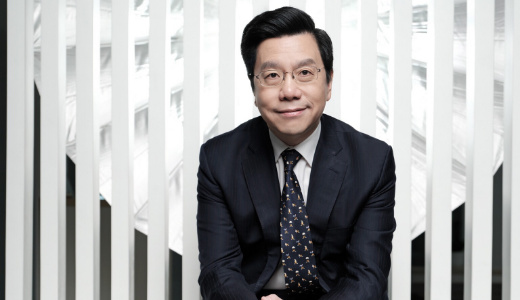 观点
观点
 观点
观点
 观点
观点
 观点
观点
 观点
观点
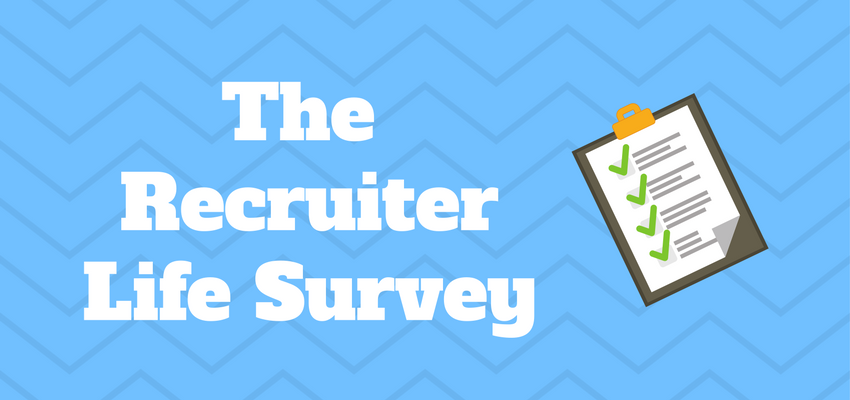 观点
观点
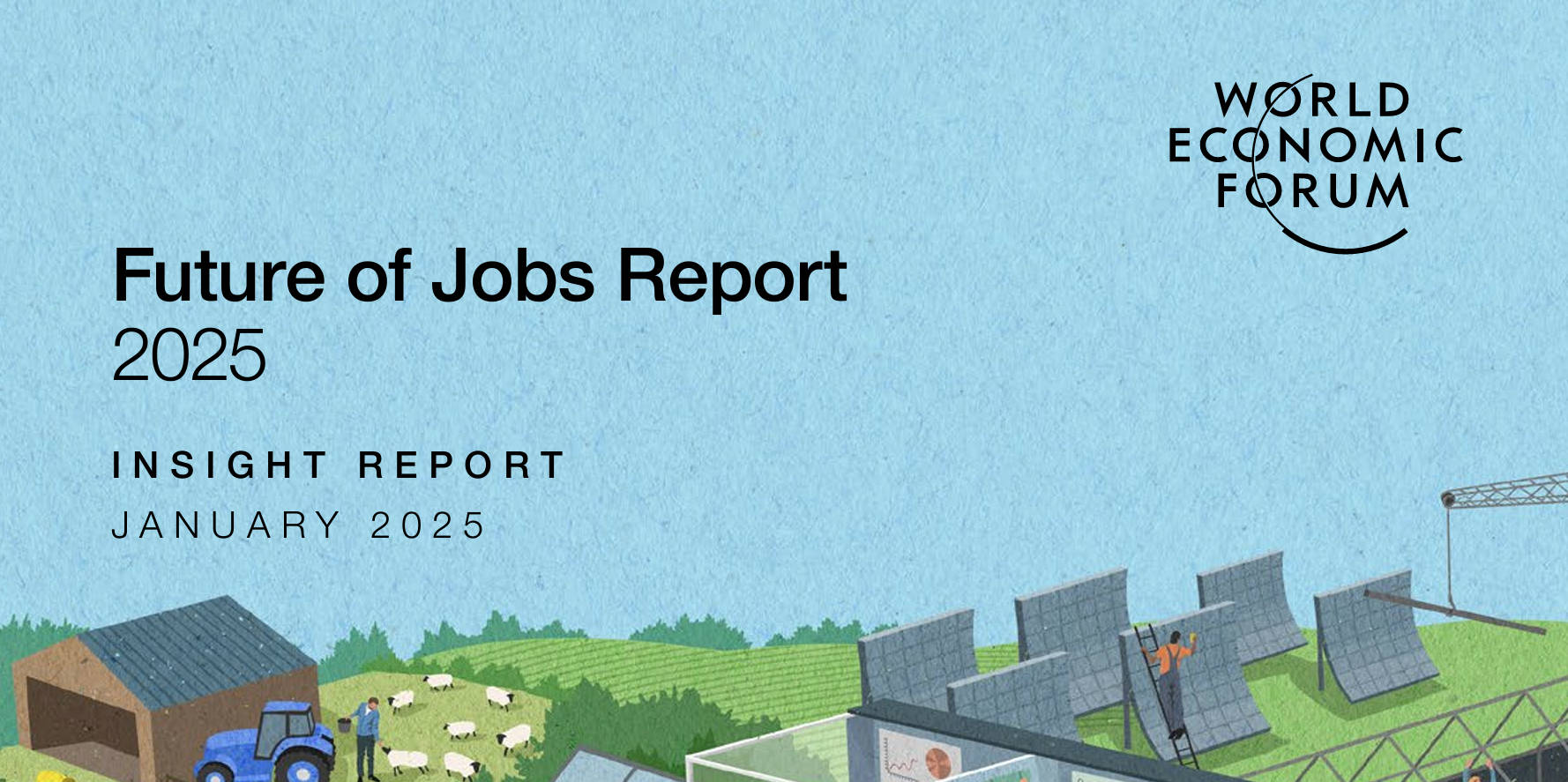




 扫一扫 加微信
hrtechchina
扫一扫 加微信
hrtechchina

